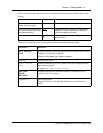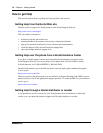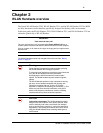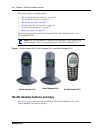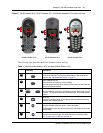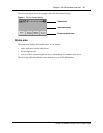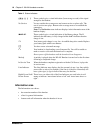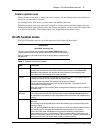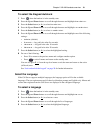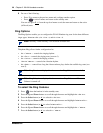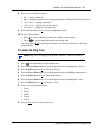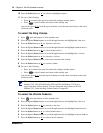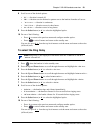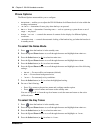
Chapter 2 WLAN Handsets overview 17
WLAN IP Handset 2210/2211/2212 User Guide
Feature options area
When a feature is activated, or when you are on an active call, the Feature options area shows you
the action you must take to proceed.
For example:
Pswd. This means you must enter your mailbox password.
The Feature options area shows the label for the
Ftre soft key and for the three display soft keys.
These button labels appear directly above the Feature and display soft keys, and to the right of the
Ftre label on the display. These button labels vary, depending on the feature in use.
WLAN handset states
The WLAN Handset can be in one of the states described in the following table.
IMPORTANT!
User MUST end every call
The user must end every call, by pressing the Power Off/End Call key, to
release system resources and allow the WLAN Handset to function properly.
If this is not done, it will result in the ringer not ringing and you might miss an
important call.
Table 3 States of the WLAN Handset
State Description
Power off The handset is turned off. It is not registered with the Call Server.
Normally the handset enters the power-off state when the user presses Power Off/
End Call for approximately two seconds when the handset is in the standby state.
The batteries can be recharged in the power-off state.
Standby This is the normal state when the handset is online but inactive. In the standby state, the
handset can receive calls and access the User Option menu.
To perform other operations, the handset must be active (off-hook).
The standby state uses less power than the active (idle) state. The batteries can be
recharged in the standby state.
When the handset is in the standby state, the programmed extension number is shown in
the display area.
Active
(off-hook)
This is equivalent to a regular telephone being off-hook.
The handset goes to the active (off-hook) state by pressing Power On/Start Call when
the handset is in the standby or active (idle) states. When in this state, the handset uses a
soft ring.
Active (idle) This is equivalent to a regular telephone being idle. The active (idle) state is reached in
two ways:
An incoming call in the Standby state causes the handset to go to the active (idle) state
and begin ringing.
The user presses FCN and 3 when the handset is in the active (off-hook) state to access
the function menu. In this state, the handset does not ring when a call comes in.
In the active (idle) state, the handset and access point exchange a small packet
approximately once every 15 milliseconds. This increases the power consumption and
consumes bandwidth, particularly for the RF portion of the link. Therefore, the handset is
not normally left in the active (idle) state except for special situations.



